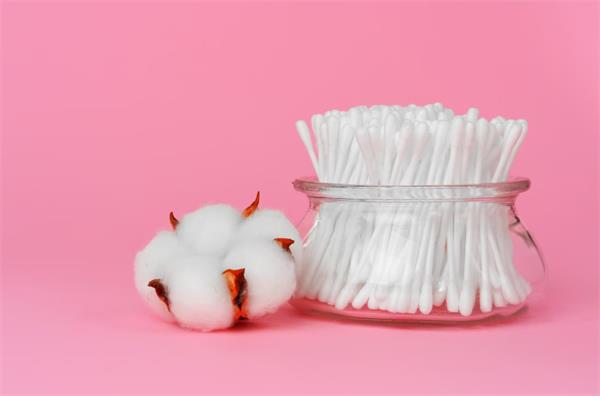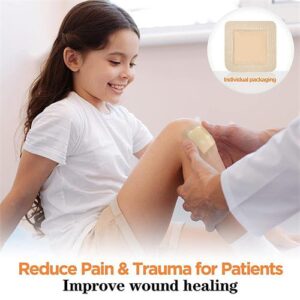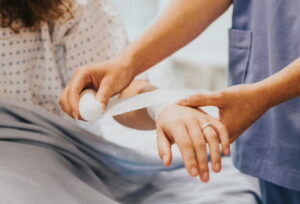In this article, we’ll navigate through the world of cotton swabs, exploring their diverse applications, highlighting the disparities between medical and ordinary swabs, and equipping you with essential insights to make informed decisions. Whether you’re seeking optimal hygiene practices, precise makeup application, or reliable wound care, we’ve got you covered.
What are cotton swabs?
Cotton swabs, also known as cotton buds or Q-tips (a brand name), are small handheld tools designed for various applications. They consist of a long handle made of plastic or paper with a cotton tip on one or both ends. The cotton tip is composed of tightly wound cotton fibers that provide softness, absorbency, and gentle cleaning capabilities. These versatile tools are widely used in personal care, healthcare, beauty, and household settings.
The versatility of cotton swabs lies in their ability to perform various tasks. They can be used for personal hygiene practices, such as cleaning the outer ears, applying creams or ointments to small areas, and removing makeup. In addition, they find applications in arts and crafts, precision cleaning of delicate objects, and handy tools for reaching tight spaces.
Cotton swabs are widely accessible and affordable, making them a common item found in households and professional settings. Their compact size and disposable nature make them convenient for single-use applications, promoting hygiene and preventing cross-contamination.
For example, when it comes to personal hygiene, cotton swabs are often used to gently clean the outer part of the ears. The soft cotton tip allows for the efficient removal of excess earwax or debris, while the handle provides a firm grip for precise movements. This ensures a hygienic and comfortable experience while minimizing the risk of injury to the delicate ear canal.
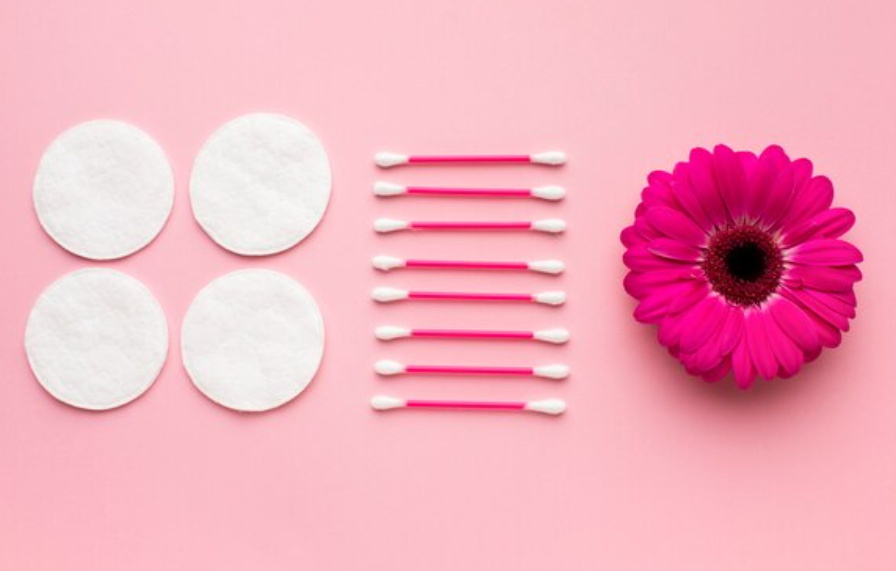
In the beauty industry, cotton swabs are valued for their precise application and makeup removal capabilities. The cotton tip can be used to apply and blend eyeshadows, lip colors, or other cosmetics with precision. They are also useful for correcting makeup mistakes or smudges, allowing for seamless touch-ups. The softness of the cotton tip ensures gentle contact with the skin, avoiding any potential irritations or abrasions.

Moreover, cotton swabs find utility beyond personal care. In arts and crafts, they serve as versatile tools for intricate painting, precise detailing, or blending techniques. Their small size and cotton tips make them ideal for dabbing or smudging paint on canvases or other artistic mediums.
Additionally, their absorbent nature allows for the controlled application of various art mediums, such as inking or watercolor techniques.
In everyday household tasks, disposable cotton swabs prove to be handy allies. They can be used to clean hard-to-reach areas, such as corners, crevices, or small electronic devices, ensuring thorough cleaning without causing damage. Their delicate yet effective cleaning action makes them suitable for delicate objects like jewelry, keyboards, or camera lenses, where precision and gentleness are essential.
Disposable Medical Cotton Swabs
Medical cotton swabs, also known as sterile cotton swabs, play a crucial role in maintaining hygiene and safety in medical and healthcare settings. Here are some factual points to consider:
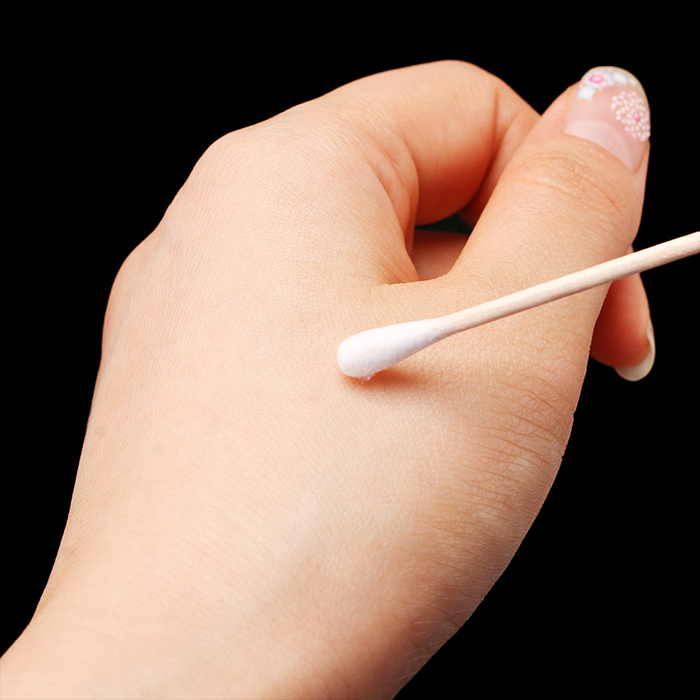
General purpose and uses: Medical cotton swabs are specifically designed for medical procedures and patient care. A study published in a medical journal revealed that sterile cotton swabs are commonly used for wound care, specimen collection, and applying medications or antiseptic solutions in healthcare settings. Their sterile nature helps reduce the risk of infection and ensures patient safety.
Applications of Disposable Cotton Swabs
Medical Industry
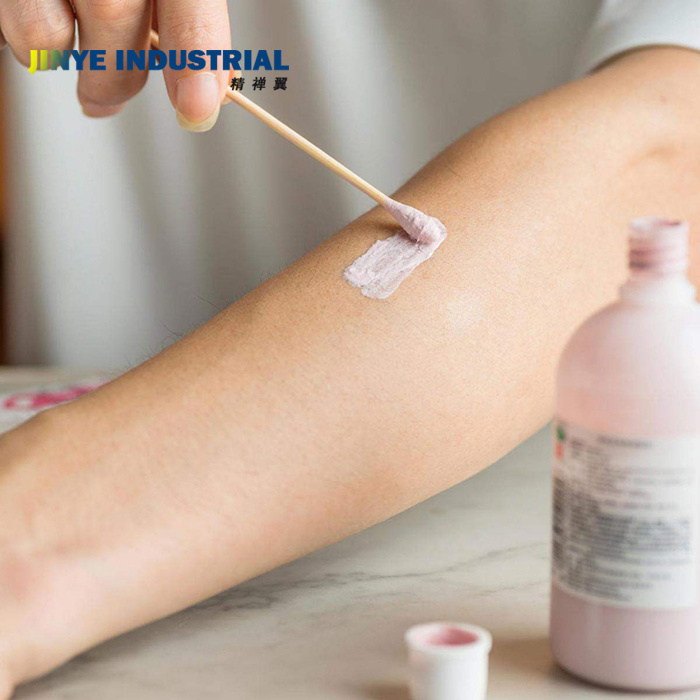
Usage in medical procedures
Cotton swabs play a crucial role in various medical procedures, contributing to the precision and effectiveness of these processes. They are extensively used for tasks such as wound cleaning, specimen collection, and applying medication.
For example, when cleaning wounds, medical professionals often use cotton buds to gently remove debris and ensure proper hygiene. Cotton buds also aid in the collection of samples for laboratory analysis, such as swabbing the throat or nasal passages to detect pathogens or perform genetic testing. Their small, tapered tips allow for precise and controlled handling, making them indispensable tools in the medical field.
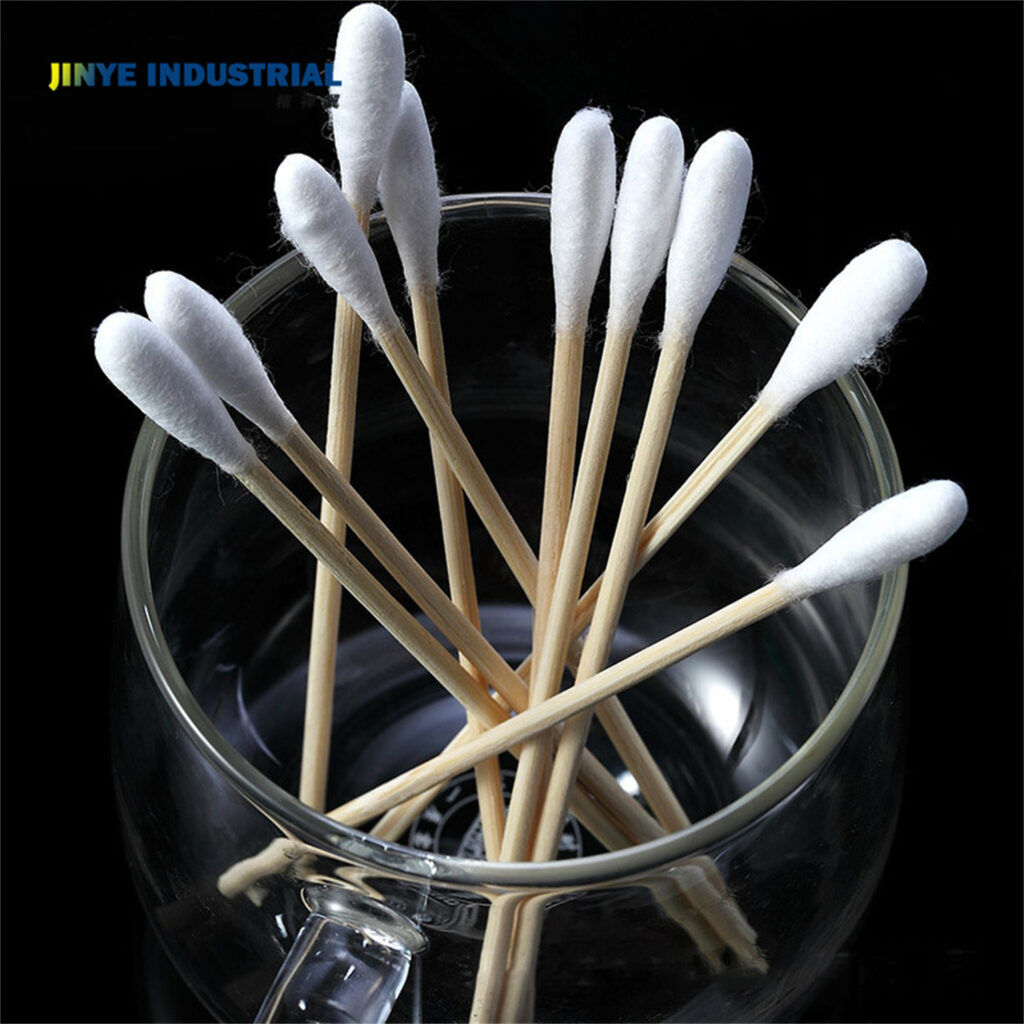
Sterile cotton swabs for medical applications
In the medical industry, sterility is of utmost importance to prevent the spread of infections. Sterile cotton swabs are specifically designed and manufactured to meet the stringent requirements of medical environments. They undergo thorough sterilization processes, such as gamma irradiation or ethylene oxide gas treatment, to ensure that they are free from harmful microorganisms.
Surgeons and other healthcare professionals rely on sterile cotton swabs during surgeries, diagnostic procedures, and other sterile applications. These swabs help maintain aseptic conditions, reducing the risk of introducing pathogens and promoting patient safety.
Microbiology applications of cotton swabs
Cotton swabs find valuable applications in the field of microbiology, aiding in the collection and analysis of microbial samples. Microbiologists use cotton swabs to collect samples from various surfaces, including environmental surfaces, clinical specimens, and biological fluids.
For instance, when investigating a suspected infection, a disposable cotton swab can be used to sample the affected area, such as a skin lesion or a mucous membrane. The collected sample can then be analyzed to identify the presence of specific microorganisms, determine their antibiotic susceptibility, or study their genetic characteristics.
Cotton swabs offer a convenient and efficient means of sampling and transporting microbiological specimens for further analysis in the laboratory.
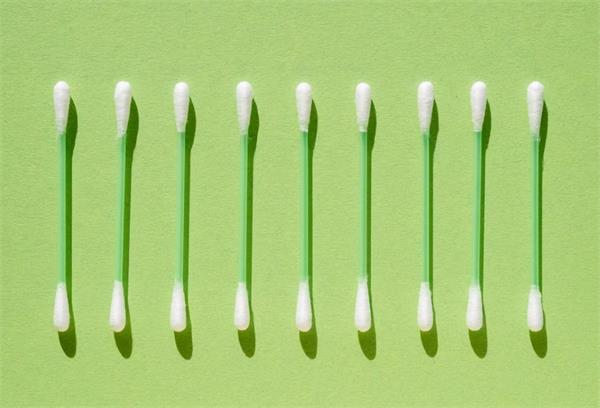
Beauty and cosmetics industry
Makeup application and removal
Cotton swabs are invaluable tools in the beauty and cosmetics industry, aiding in precise makeup application and removal. Their small, tapered tips allow for targeted application of products, such as eyeshadow, eyeliner, or lipstick. Makeup artists and enthusiasts often use cotton swabs to blend colors seamlessly or correct any mistakes.
Additionally, when it comes to makeup removal, cotton swabs are gentle on the skin and can effectively remove makeup from sensitive areas, such as around the eyes or along the lipline.
Nail polish application and touch-ups
When it comes to achieving flawless nail polish application, cotton swabs prove to be handy tools. They can be used to remove excess polish from cuticles or skin, ensuring clean and polished nails. In case of any smudges or mistakes, a cotton swab dipped in nail polish remover can help correct the imperfections with precision. This allows for a professional-looking manicure without the need for expensive salon visits.
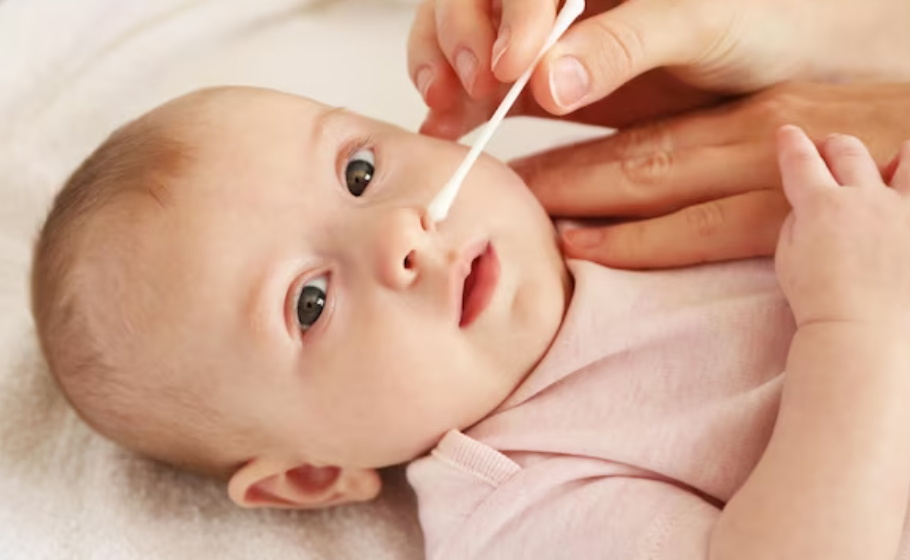
Baby care
Safety considerations for using cotton swabs on babies
When using disposable cotton swabs for baby care, it is crucial to prioritize safety and take necessary precautions. Parents and caregivers should exercise caution to avoid potential risks and injuries. For example, it is important not to insert cotton swabs into the ear canal of a baby, as it can lead to damage or push wax deeper into the ear. Instead, cotton swabs can be used for gentle cleaning around the outer part of the ear, following the guidance of healthcare professionals. Safety guidelines and recommendations from healthcare providers should always be followed to ensure the well-being of the baby.
Using cotton swabs for baby hygiene
Cotton swabs have certain applications in baby hygiene routines. They can be used to clean the outer folds of a baby’s ears or to gently wipe the area around the nose. However, it is essential to exercise caution and use gentle motions to avoid causing any discomfort or harm to the baby. Alternatives to cotton swabs, such as soft washcloths or cotton balls, can also be considered for maintaining cleanliness in delicate areas.
Precautions for Using Disposable Cotton Swabs

Safety guidelines for ear cleaning
When it comes to ear cleaning, it is essential to follow specific safety guidelines to avoid any potential harm or damage. Firstly, it is important to remember that cotton swabs should never be inserted into the ear canal.
The ear canal is delicate, and inserting disposable cotton swabs can push wax deeper into the ear, potentially causing blockages or injury to the ear canal or eardrum. Instead, disposable cotton swabs can be used for gentle cleaning around the outer part of the ear. It is advisable to consult with a healthcare professional, such as an otolaryngologist, for proper guidance on ear-cleaning techniques and any specific concerns related to ear health.
Risks and potential harm associated with improper usage
Improper usage of disposable cotton swabs can pose risks and potential harm. Some of the risks include:
Ear canal injury: Inserting cotton swabs into the ear canal can result in injury to the delicate tissues or the eardrum. This can lead to pain, bleeding, or damage to hearing.
Wax impaction: Pushing earwax deeper into the ear canal can cause wax impaction, leading to symptoms such as hearing loss, ear discomfort, or tinnitus. Removal of impacted wax often requires professional intervention.
Risk of infection: The introduction of foreign objects into the ear canal can increase the risk of infection. The moist and warm environment of the ear canal creates a favorable environment for bacterial or fungal growth.
It is important to note that the ear has a natural self-cleaning mechanism, and the presence of wax is normal and necessary to maintain ear health. Cleaning the ears with cotton swabs should be limited to the external areas and should not involve inserting them into the ear canal.
Alternatives to cotton swabs for ear cleaning
To ensure safe and effective ear cleaning, there are alternative methods that can be considered:
Soft washcloth: Gently wiping the outer part of the ear with a soft washcloth can help remove dirt or excess wax from the surface.
Ear drops: Over-the-counter ear drops specifically designed for wax removal can soften the wax, making it easier for the body’s natural mechanisms to clear it out.
Ear irrigation: In certain cases, healthcare professionals may perform ear irrigation using specialized equipment to safely remove excessive earwax or debris.
It is always recommended to seek professional advice and guidance for ear cleaning, especially if there are concerns regarding wax buildup or any discomfort in the ears.
Choosing the Best Cotton Swabs
Factors to consider when selecting cotton swabs
When choosing the best cotton swabs, it is important to consider the following factors:
Quality: Look for cotton swabs made of high-quality materials, such as 100% pure cotton, that are durable and reliable. High-quality cotton ensures softness and absorbency, allowing for effective performance. For example, a reputable brand like JINYE Cotton Swab is known for using premium cotton fibers that provide superior absorbency and gentle cleaning.
Safety: Ensure that the cotton swabs are manufactured in compliance with safety standards. If you intend to use cotton swabs for medical purposes, it is crucial to opt for sterile options. Sterile cotton swabs minimize the risk of introducing bacteria or causing infections.
Versatility: Consider the versatility of cotton swabs and their suitability for different applications. Look for swabs that can be used in various contexts, such as makeup application, cleaning, or first aid.
Handle design: Evaluate the design of the cotton swab handles. A sturdy and ergonomic handle provides better control and comfort during use, allowing for precise and effortless handling.
Quantity and packaging: Assess the quantity and packaging options available to match your specific needs. If you require cotton swabs for personal use or travel, individual packs with a convenient dispenser can be ideal. On the other hand, if you need a larger quantity for professional or commercial purposes, bulk packaging options like JINYE’s economy packs may be more suitable.
Five world-famous cotton swab brands
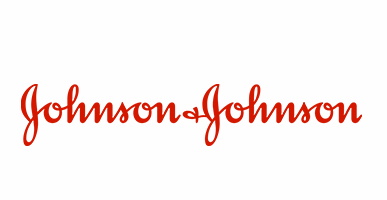
Johnson & Johnson: Johnson & Johnson is a well-known global healthcare company that produces a wide range of medical and personal care products, including cotton swabs. They have a strong presence in the market and are known for their commitment to quality and safety.
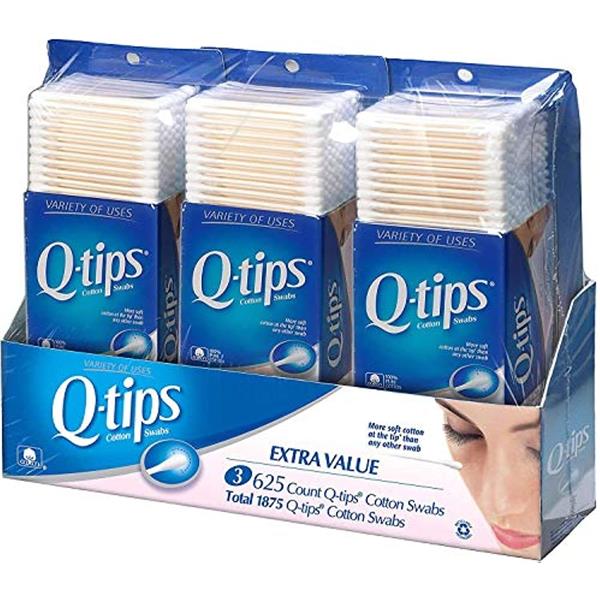
Q-tips: Q-tips, a brand owned by Unilever, is a leading supplier of cotton swabs worldwide. They offer a variety of cotton swab products for personal care and hygiene purposes. Q-tips have a strong brand presence and are trusted by consumers globally.

Dynarex Corporation: Dynarex is a reputable manufacturer and supplier of medical disposable products, including cotton swabs. They cater to the healthcare industry and provide sterile cotton swabs for various medical procedures. Dynarex is known for its quality products and wide distribution network.

JINYE: JINYE is a prominent manufacturer of single-use medical products, including cotton swabs. They specialize in producing high-quality, sterile cotton swabs for medical applications. JINYE has a strong presence in the healthcare market and is recognized for its reliable products.
ULINE: ULINE is a leading distributor of industrial and packaging supplies, including cotton swabs. They offer a wide selection of cotton swabs suitable for industrial, cleaning, and general-purpose applications. ULINE has a large customer base and provides efficient distribution services.
Ensuring Quality and Safety
Understanding quality standards for cotton swabs
Industry standards: Familiarize yourself with industry standards for cotton swabs, such as ISO 13485:2016 for medical devices. These standards outline the requirements for quality management systems and ensure that the manufacturing processes meet specific criteria for consistent quality.
Material specifications: Pay attention to the materials used in the manufacturing of cotton swabs. Look for swabs made from high-quality, non-toxic materials that are safe for their intended applications. For medical use, ensure the swabs meet regulatory requirements and are free from substances that could cause harm or adverse reactions.
Checking for certifications and compliance
ISO certifications: verify if the cotton swab manufacturer holds relevant ISO certifications, such as ISO 9001 for quality management systems or ISO 13485 for medical device manufacturing. These certifications indicate that the company follows stringent quality control procedures and complies with international standards.

FDA approval: If you are purchasing cotton swabs for medical purposes in the United States, ensure the manufacturer has obtained approval from the U.S. Food and Drug Administration (FDA). FDA-approved products undergo rigorous testing and scrutiny to ensure their safety and efficacy.
Other relevant certifications: Depending on your specific requirements, check for additional certifications applicable to the industry or specific applications. For example, if you are purchasing cotton swabs for cleanroom environments, look for certifications such as ISO 14644 for cleanroom standards.
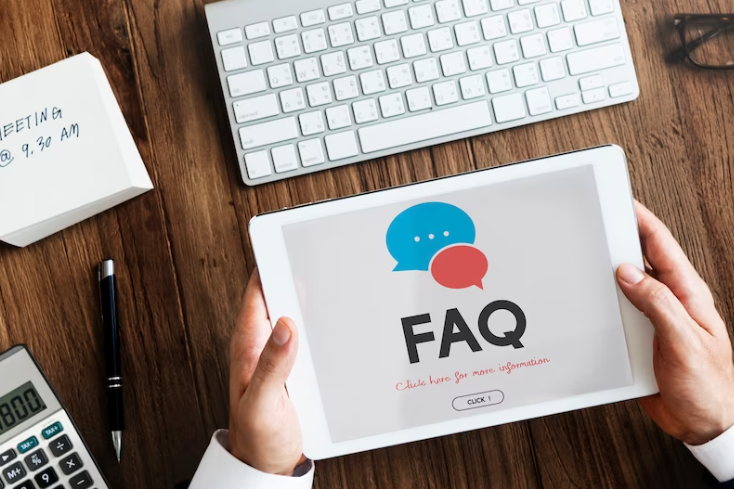
FAQ About Cotton Swab
- Q: Can cotton swabs be used for cleaning ears? A: Yes, cotton swabs can be used for ear cleaning, but it is important to follow safety guidelines to avoid injury.
- Q: Are cotton swabs suitable for applying makeup? A: Yes, cotton swabs are commonly used for precise makeup application, blending, and correcting small mistakes.
- Q: Can cotton swabs be used to clean wounds? A: Cotton swabs can be used for gentle wound cleaning, but sterile options are recommended for medical purposes.
- Q: Are there eco-friendly alternatives to plastic cotton swabs? A: Yes, there are eco-friendly options available, such as cotton swabs with biodegradable handles or reusable alternatives.
- Q: How can I find reputable suppliers for wholesale cotton swabs? A: Research and compare suppliers, check their certifications, read customer reviews, and request samples before making a decision.
- Q: Can cotton swabs be used for cleaning electronics? A: Cotton swabs with precision tips are suitable for cleaning small and delicate electronic devices, but use caution and avoid excess moisture.
- Q: How often should I replace cotton swabs? A: It is recommended to use a new cotton swab for each application to maintain hygiene and prevent cross-contamination.
- Q: Are there specific cotton swabs for baby care? A: Yes, there are cotton swabs designed specifically for baby care, featuring soft and gentle materials and appropriate sizes.
- Q: Can cotton swabs be used for arts and crafts? A: Yes, cotton swabs are often used in arts and crafts projects for painting, applying glue, or creating textured effects.
- Q: Are there specialized cotton swabs for cleaning hard-to-reach areas? A: Yes, there are cotton swabs with long handles or flexible tips designed for reaching narrow or inaccessible spaces.
Conclusion
In conclusion, understanding the different types of cotton swabs, their applications in various industries, and the precautions for usage are essential for making informed decisions. Following the guidelines outlined in this article, you can confidently select cotton swabs that meet your specific needs, whether for medical purposes, beauty, cosmetics, baby care, first aid, or other applications. Remember to prioritize quality, safety, and functionality to ensure the best experience and results.
